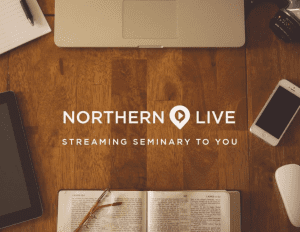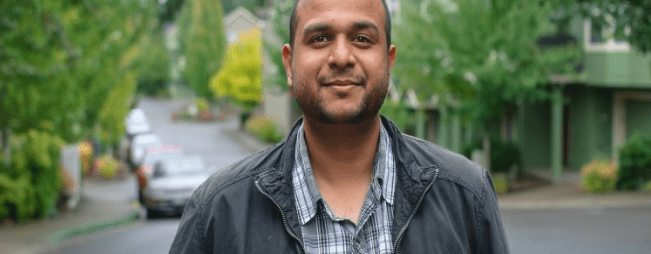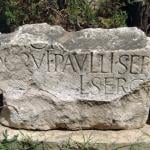 From Science Daily:
From Science Daily:
In a new article published in the journal Trends in Neurosciences, University of Arizona researchers suggest that the link between exercise and the brain is a product of our evolutionary history and our past as hunter-gatherers.
UA anthropologist David Raichlen and UA psychologist Gene Alexander, who together run a research program on exercise and the brain, propose an “adaptive capacity model” for understanding, from an evolutionary neuroscience perspective, how physical activity impacts brain structure and function.
Their argument: As humans transitioned from a relatively sedentary apelike existence to a more physically demanding hunter-gatherer lifestyle, starting around 2 million years ago, we began to engage in complex foraging tasks that were simultaneously physically and mentally demanding, and that may explain how physical activity and the brain came to be so connected.
“We think our physiology evolved to respond to those increases in physical activity levels, and those physiological adaptations go from your bones and your muscles, apparently all the way to your brain,” said Raichlen, an associate professor in the UA School of Anthropology in the College of Social and Behavioral Sciences.
“It’s very odd to think that moving your body should affect your brain in this way — that exercise should have some beneficial impact on brain structure and function — but if you start thinking about it from an evolutionary perspective, you can start to piece together why that system would adaptively respond to exercise challenges and stresses,” he said.
Having this underlying understanding of the exercise-brain connection could help researchers come up with ways to enhance the benefits of exercise even further, and to develop effective interventions for age-related cognitive decline or even neurodegenerative diseases such as Alzheimer’s.
Notably, the parts of the brain most taxed during a complex activity such as foraging — areas that play a key role in memory and executive functions such as problem solving and planning — are the same areas that seem to benefit from exercise in studies.
“Foraging is an incredibly complex cognitive behavior,” Raichlen said. “You’re moving on a landscape, you’re using memory not only to know where to go but also to navigate your way back, you’re paying attention to your surroundings. You’re multitasking the entire time because you’re making decisions while you’re paying attention to the environment, while you are also monitoring your motor systems over complex terrain. Putting all that together creates a very complex multitasking effort.”
The adaptive capacity model could help explain research findings such as those published by Raichlen and Alexander last year showing that runners’ brains appear to be more connected than brains of non-runners. [HT: LNMM]
Diversity in the church, its marks:
Recent trends suggest that a significant number of churches are overcoming the limiting effects of racial conflict, prejudice, and ethnocentrism despite church traditions and systems that promote homogeneity as a practical alternative to the inevitable conflicts between different people groups. Diversity-oriented churches, despite the challenges they face, are some of the fastest growing churches in the United States.
What is a diversity-oriented church?
At the group level, the term diversity is used to refer to heterogeneity within a group on characteristics such as informational (professional background, education, skills), visible (race, age, ethnicity) or value-based (ethic, motivation) differences. Diversity-oriented churches are missional multicultural organizations which are intentional about deconstructing socially divisive constructs in the church, denominations, and their communities with the message of the Gospel.
The following are some key characteristics of diversity-oriented churches:
- Leadership that strategically creates vision and value congruence across the organization that empowers teams and individuals and fosters higher than normal levels of organizational commitment and productivity towards being multicultural.
- Top-management team that reflects the demographics of the church membership and the community.
- Organizational strategy that is clearly articulated and supported by decisive action when inequalities and conflict in the church and in the community need to be addressed.
- A leadership development plan that is predicated upon the recruitment, training, and professional development of future generations of leaders.
- A formal plan to focus leadership with respect to organizational change and diversity management.
- Policies and procedures for conflict resolution and reconciliation at all levels of the organization and in the community.
- The leader defines, legitimizes, and reproduces the organization’s vision, mission, values, and practices across generations.
For fifth grader Austin King Hurt, what began as a way to feed his family has now turned into a mission to feed an entire city.
Austin King, or The Young Urban Gardener as his YouTube and Facebook followers know him, started gardening three years ago because his family was hungry.
According to WTHR 13, Austin remembers when all his family had to eat was rice and beans:
“I took my mamma’s beans out of the cabinet because we didn’t have much to eat… All we had was rice and those bags of beans… It was like a very small bag of beans, not even enough to feed everybody, so I had to make enough.”
— Austin King Hurt
This was a defining moment for Austin King, a moment where he had to grow up faster than he should have to.
It was then that Austin decided he would do everything in his power to make sure that his family was never hungry again.
Austin dug a hole in his backyard and dumped the beans in them.
“All I knew was water, dirt and sunshine. That’s all I knew. I didn’t know nothing else”
— Austin King Hurt
It only took a week for the bean plants to start sprouting from the ground. Austin put a wooden stake in the ground so that the beans could grow taller. The plants provided beans for Austin’s family for the rest of the winter.
Chris Gehrz on the history of VBS:
If your church is anything like mine, it’s currently hosting hundreds of children for Vacation Bible School (VBS): a week-long program of Bible stories, worship, missions projects, crafts, and games. And if you’re anything like me, you’re both volunteering for VBS and wondering just when this model of Christian education became a staple of the church year.
In 2015 Michael Altman noted the lack of a good history of VBS. Now, I’m not the historian to write that book, but I did have some time last week to dig a bit.
In his 1964 history of Christian education, Wheaton education professor C.B. Eavey traced the idea back to Boston just after the Civil War, but it’s generally agreed that the first VBS antecedent to be held as a summer church-run activity took place starting in 1877 in Montreal, Canada. Then in 1898 Eliza Hawes, the children’s ministry director at New York City’s Baptist Church of the Epiphany, organized an “Everyday Bible School.” Originally held at a rented beer hall, attendance plummeted in 1900 when Epiphany’s pastor insisted on relocating to the church itself. The program moved back near the beer hall the following year, Hawes’ last at the church, when she ran seven separate schools.
But it was another Baptist from the same city who is most frequently credited with founding the “vacation church school” as we would recognize it: Robert G. Boville, executive secretary of the New York City Baptist Board of Missions. “He had a concern,” write James E. Reed and Ronnie Prevost, “similar to that of [18th century Sunday School founder Robert] Raikes in Gloucester [England], that children of New York be given religious instruction during their idle summers to keep them out of trouble and develop patterns for productive and upright adult living.” Or as Eavey put it: “The vacation church school was started to gather idle children into unused churches where unoccupied teachers might keep them busy in a wholesome way in a wholesome environment.”











